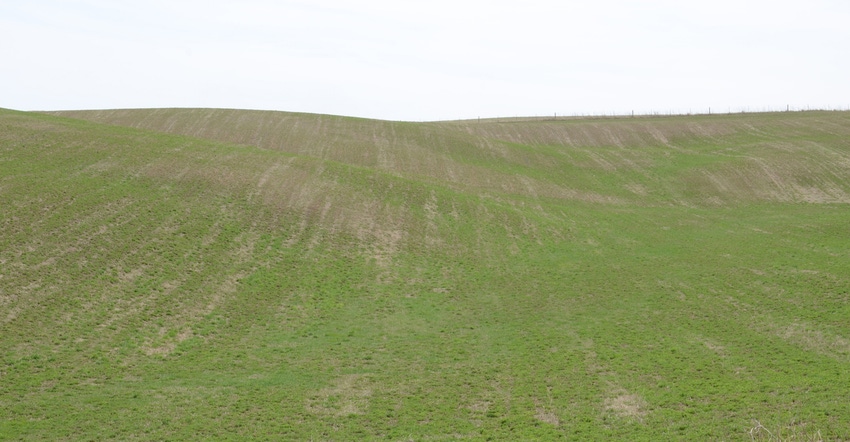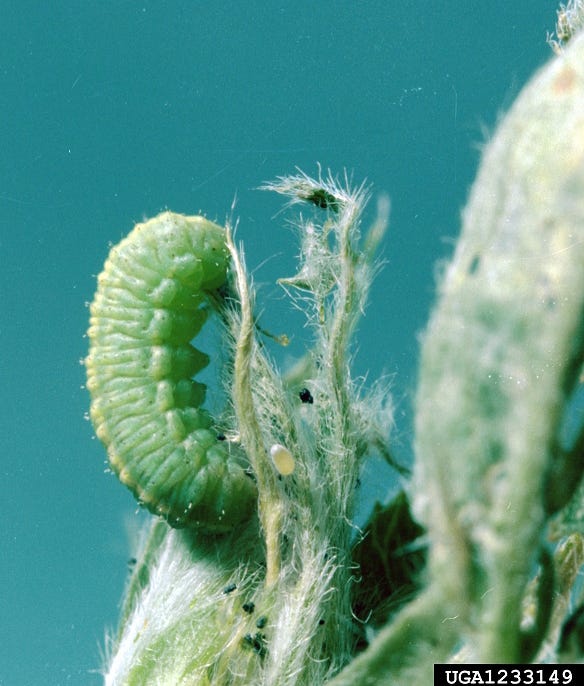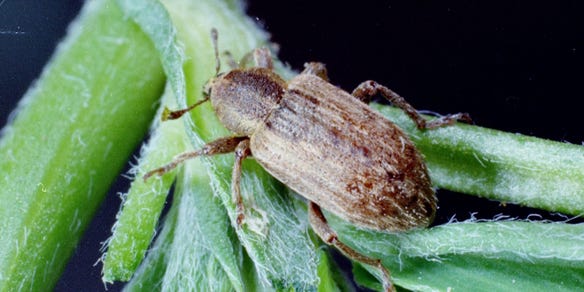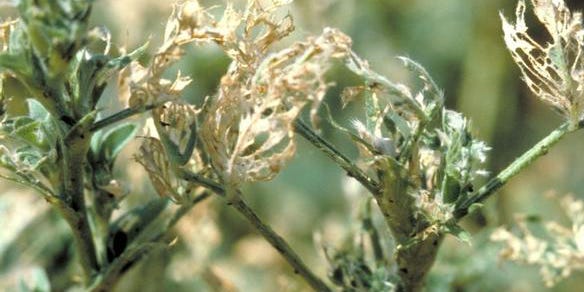May 20, 2019

Keep alfalfa weevils in mind while scouting alfalfa fields and evaluating stands for winter injury. A recent ICM News article on the Iowa State University Integrated Crop Management website gives some great tips for assessing winter injury and providing additional resources.
Alfalfa weevil larvae defoliate plants and their feeding reduces yield, quality and stand health. Weevil damage is typically concentrated on the first cutting of alfalfa, but the impact of weevils on the first cutting can negatively influence vigor of the second cutting. Alfalfa weevil damage typically occurs as farmers are planting corn, so this pest can be easy to ignore. Alfalfa weevil, in most years, are gone from the fields by mid-June.
In the following article, ISU Extension entomologist Erin Hodgson offers information on scouting procedures and guidelines for making alfalfa weevil treatment decisions.
Time to scout for pest
Adult alfalfa weevils become active and start laying eggs as soon as temperatures exceed 48 degrees F. Alfalfa weevil eggs develop based on temperature (accumulating degree days), and hatching can start around the time when 200 to 300 growing degree days (GDD) have accumulated.

LARVAE STAGE: Alfalfa weevil larvae have a dark head and pale green body with a white stripe down the back. Fully grown larvae are about a quarter-inch long.

In Iowa, you should start scouting alfalfa fields south of Interstate 80 at 200 GDD and fields north of Ienterstate 80 at 250 GDD. Based on accumulated temperatures since January, weevils could be active throughout southern Iowa by May 20. Visit the Iowa Environmental Mesonet to keep updated on GDD accumulation for 2019.
Pest reduces yield, quality
Alfalfa weevil is an important defoliating pest in alfalfa. Heavy infestations can reduce both tonnage and forage quality. Adult weevils feed on alfalfa plants, but typically it’s the larvae that cause most of the injury. Female alfalfa weevils can lay 800 to 4,000 eggs in a lifetime and insert five to 20 at a time into alfalfa stems.

ADULT WEEVIL: Alfalfa weevil adults have an elongated snout and elbowed antennae. Wings and body are mottled or brown.

Newly hatched larvae can be found feeding on terminal leaves, leaving newly expanded leaves skeletonized. Maturing larvae move down the plant and begin feeding between the veins on the alfalfa leaf. Peak larval activity occurs around 575 degree days. Often silken pupal cases are attached to leaves in the lower canopy or in leaf litter.
The time it takes to reach the adult stage depends on temperature, but it can take about eight weeks. Adults eat along the leaf margin, leaving irregular notches. A heavily infested field will look frosted or silver.
Scouting and management
After reaching the benchmark for degree days (200 GDD accumulation in southern Iowa and 250 in northern Iowa), use a sweep net to sample for adults and larvae. South-facing slopes warm up faster and may be a place to start sampling.

DAMAGE: Heavily defoliated alfalfa fields appear frosted when viewed from a distance.

After larvae are first collected in sweep nets, collect six alfalfa stems from five locations throughout the field. Take each stem and vigorously shake into a bucket to dislodge larvae from the plant. Small larvae can be difficult to separate from the plant and therefore careful plant inspection is also needed.
Average the number of larvae per 30 stems and plant height to determine if the economic threshold is approaching. Remember, cutting alfalfa is an effective management tool for alfalfa weevil larvae, and an insecticide application may be avoided if harvesting within a few days of reaching the economic threshold.
Source: ISU, which is responsible for the information provided and is wholly owned by the source. Informa Business Media and its subsidiaries aren’t responsible for any of the content in this information asset.
You May Also Like




